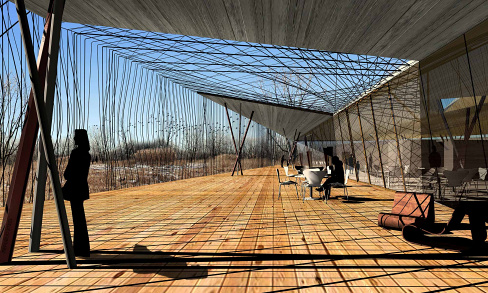Bird Collisions: Problem, Solution, Opportunity
Birds behave as if clear and reflective glass is invisible to them, which results in numerous bird deaths attributable to windows. According to ornithologist Daniel Klem, Jr., extensive studies over the past several decades have estimated annual bird deaths to be between one hundred million to one billion birds in the United States alone, although the number is likely higher. “To put these numbers into perspective, annual US bird populations are estimated to be twenty billion in the fall. ... Each year US hunters are estimated to take 120.5 million birds, and free-ranging cats are suspected to kill hundreds of millions to over a billion songbirds. Some researchers suggest that the overall avian mortality rate attributable to glass is likely to be much greater than what is attributable to cats: reasoning that cats are active predators that most often capture vulnerable prey while sheet glass is an indiscriminate killer that takes the strong as well as the weak. ... Minimally, from an ethical and moral perspective, any unintended and unnatural killing associated with human presence in the environment should be addressed and reduced if not eliminated.”
Calumet, Illinois, is an important resting stop for migratory birds, who follow the surrounding waterways and make stops here to refuel for their long journey south in the fall and back north in the spring. In designing the Ford Calumet Environmental Center, the Studio took precautions to minimize bird strikes by identifying various strategies that could be used to resolve this issue.
In 2008, as the Studio was designing the Ford Calumet Environmental Center in Calumet, Illinois, preventing avian deaths become a major priority. Calumet is an important resting stop for migratory birds, who follow the surrounding waterways and make stops here to refuel for their long journey south in the fall and back north in the spring. Twenty-six different endangered birds have been identified on the site, which is also a crucial nesting ground or stopping place for the Yellow-headed Blackbird, the Yellow-crowned Night Heron, and the Little Blue Heron.
In designing the Ford Calumet Environmental Center, the Studio took precautions to minimize bird strikes by identifying various strategies that could be used to resolve this issue. Drawing from lessons learned with Aqua Tower, the Studio understood that building designs with visual complexity and fritted glass can significantly reduce bird strikes.
Ultimately, the design for the Ford Calumet Environmental Center employs a mesh—constructed of salvaged steel rebar—that encloses the building’s south porch, protecting birds from striking the transparent facade. At the same time, the mesh provides an interesting spatial opportunity by defining a space for visitors to explore and a “blind” for them to observe the surrounding wildlife, furthering the mission of the Center. The Studio has continued to study the issue and encourages all of our clients to consider the safety of birds in the design and construction of their buildings, underscoring the crucial role architects and developers can play in preventing avian deaths attributable to windows.




